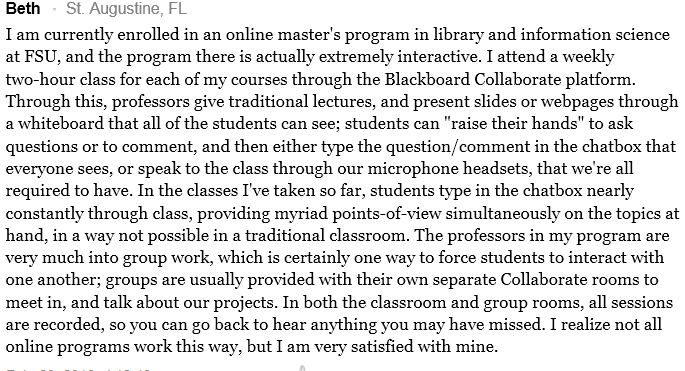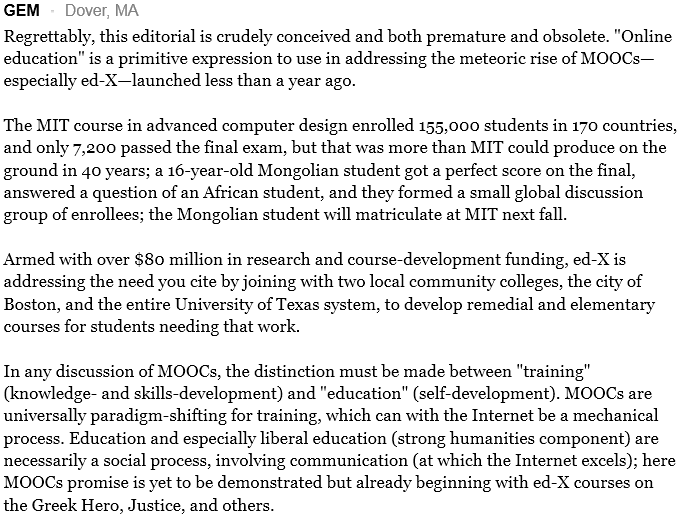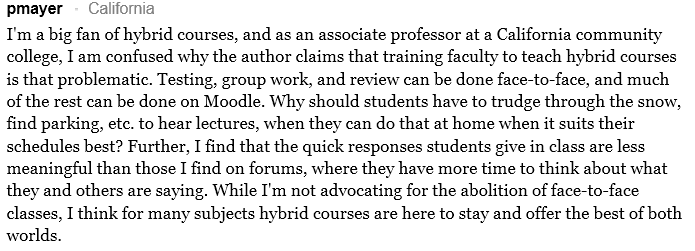|
|
|
|
|
|
|
News & Views item - February 2013 |
![]() The New York Times Comments on On-Line University Courses.
(February 20, 2013)
The New York Times Comments on On-Line University Courses.
(February 20, 2013)
This February 18, 2013 the New York Times' editorial* "The Trouble With Online Colleges" sounded a note of caution in regard to embracing too readily online education by universities. To date the editorial has elicited 457 comments.

Having noted the exponentially increasing interest in Massively Open Online Courses (MOOCs) the Times editorial warns: "This development, though, says very little about what role online courses could have as part of standard college instruction. College administrators who dream of emulating this strategy for classes like freshman English would be irresponsible not to consider two serious issues."
It goes on to highlight the ~90% attrition rates "for some huge online courses" and high rates of attrition "appear to be a problem even in small-scale online courses". And secondly "courses delivered solely online may be fine for highly skilled, highly motivated people, but they are inappropriate for struggling students who make up a significant portion of college enrollment".
Furthermore, research by the Community College Research Center "has shown over and over again that community college students who enroll in online courses are significantly more likely to fail or withdraw than those in traditional classes..."
And the reasons "for such failures are well known. Many students, for example, show up at college (or junior college) unprepared to learn, unable to manage time and having failed to master basics like math and English," such students "need engagement with their teachers to feel comfortable and to succeed. What they often get online is estrangement from the instructor who rarely can get to know them directly. Colleges need to improve online courses before they deploy them widely.
However, the centre found that students in so-called hybrid classes: "those that blended online instruction with a face-to-face component — performed as well academically as those in traditional classes. But... teaching professors how to manage them is costly and time-consuming."
The editorial concludes with what is perhaps the bleedin' obvious: "The online revolution offers intriguing opportunities for broadening access to education. But, so far, the evidence shows that poorly designed courses can seriously shortchange the most vulnerable students."
_________________________________________
The over 450 comments contain the views of both online students and the purveyors of online courses; we reprint just three below.

________________

__________________

__________________________________________________________
*A version of this editorial appeared in print on February 19, 2013, on page A22 of the New York edition.